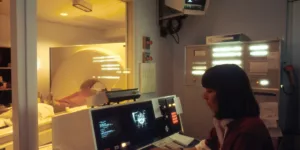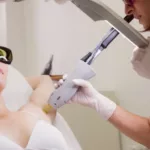In Houston, Dr. Andrew Doe, MD, is an interventional radiologist who has completed a vascular and interventional radiology fellowship and is board-certified. Men and women can receive the highest-quality care in a comfortable setting at their practice, specializing in advanced outpatient interventional radiology.
Specialities:
- Radiology Diagnostics
- Interventional and Vascular Radiology
To gather this information, radiologists need to do invasive surgery, which isn’t possible without imaging. Diseases are diagnosed by ionizing radiation like X-rays, CT scans, and positron emission tomography scans (PET). They also employ a variety of forms of radiation to eradicate cancerous tissues. Using imaging technologies, the field of radiology diagnoses and treats disease. Doctors can see structures inside your body with the use of diagnostic radiology.
Diagnostic radiological exams include the following:
- A computerized axial tomography (CAT) scan, or CT scan, includes CT angiography.
- The use of fluoroscopy, including upper GI and barium enema, is recommended.
- Medical imaging with magnetic resonance (MRI) and magnetic resonance angiography (MRA)Mammography
- Radiation oncology, which includes procedures such as the positron emission tomography (PET) scan and the bone density scan
- Chest x-rays are included in the plain x-rays.
- Ultrasound
Radiology for immediate reaction
CT, ultrasound, magnetic resonance imaging (MRI), and fluoroscopy are among the imaging techniques used by interventional radiologists to guide surgical procedures. When placing catheters, cables, and other small objects and gadgets into your body, the imaging aids the clinician. As a result, incisions can be made more quickly and with more minor trauma (cuts).
Doctors can utilize this technology to diagnose and treat problems throughout the body as an alternative to using a scope (camera) or open surgery.
There will be no incision, or there will be a tiny incision, made by the doctor. Most patients just require a mild level of sedation (medicines to help you relax).
Interventional radiology procedures include the following examples:
- A stent implantation is performed after an angioplasty or angiogram has been completed.
- Embolization is a procedure used to stop bleeding.
- kyphoplasty with vertebroplasty
- needle biopsies of several organs, such as the thyroid gland and the lungs
- stereotactic or ultrasound-guided biopsy of the breast
- Embolism of the uterine artery
- Location of the feeding tube for the patient
- PICCs and ports are two examples of venous access catheter implantation devices.
With a vast range of detection, staging, and treatment tools and procedures available in radiology, it plays a critical role in managing the disease. Diagnostic imaging reveals structural and disease-related changes in the body in great detail. In the event of an early diagnosis, lives can be saved.








